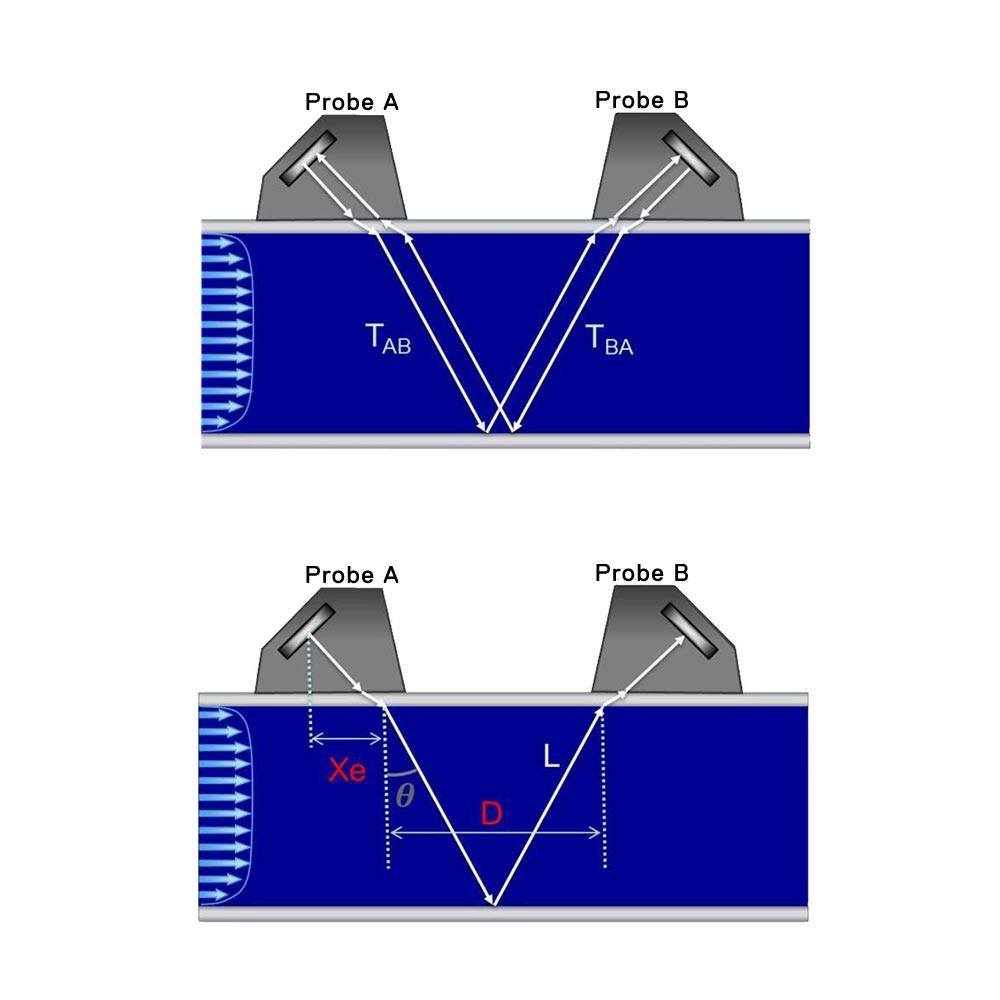Expertise
From the various possible methods that use ultrasound to measure flow speed, Ultraflux chose the “transit time difference” method, which was identified as the most precise and the only one that can truly incorporate the velocity profile along the entire acoustic path.
One or more chords can be used (one chord is made up of two probes) depending on the hydraulic conditions of the flow and the required precision.
Two successive operations are used to measure the flow rate:
- First: speed is measured using one or more chords,
- Second: the flow rate is calculated using the measured speed(s).
- it only uses the geometric parameters L and D,
- it is totally independent of the speed of sound in the fluid,
- it uses the average speed from several velocity profiles (up to 8),
- it enables bidirectional measurements to be taken,
- it is non-intrusive,
- it does not produce any loss of pressure,
- it enables highly dynamic measurements.
This measurement principle can be used for both liquids and gases. The probes used can be intrusive, external (clamp-on) or wetted.

